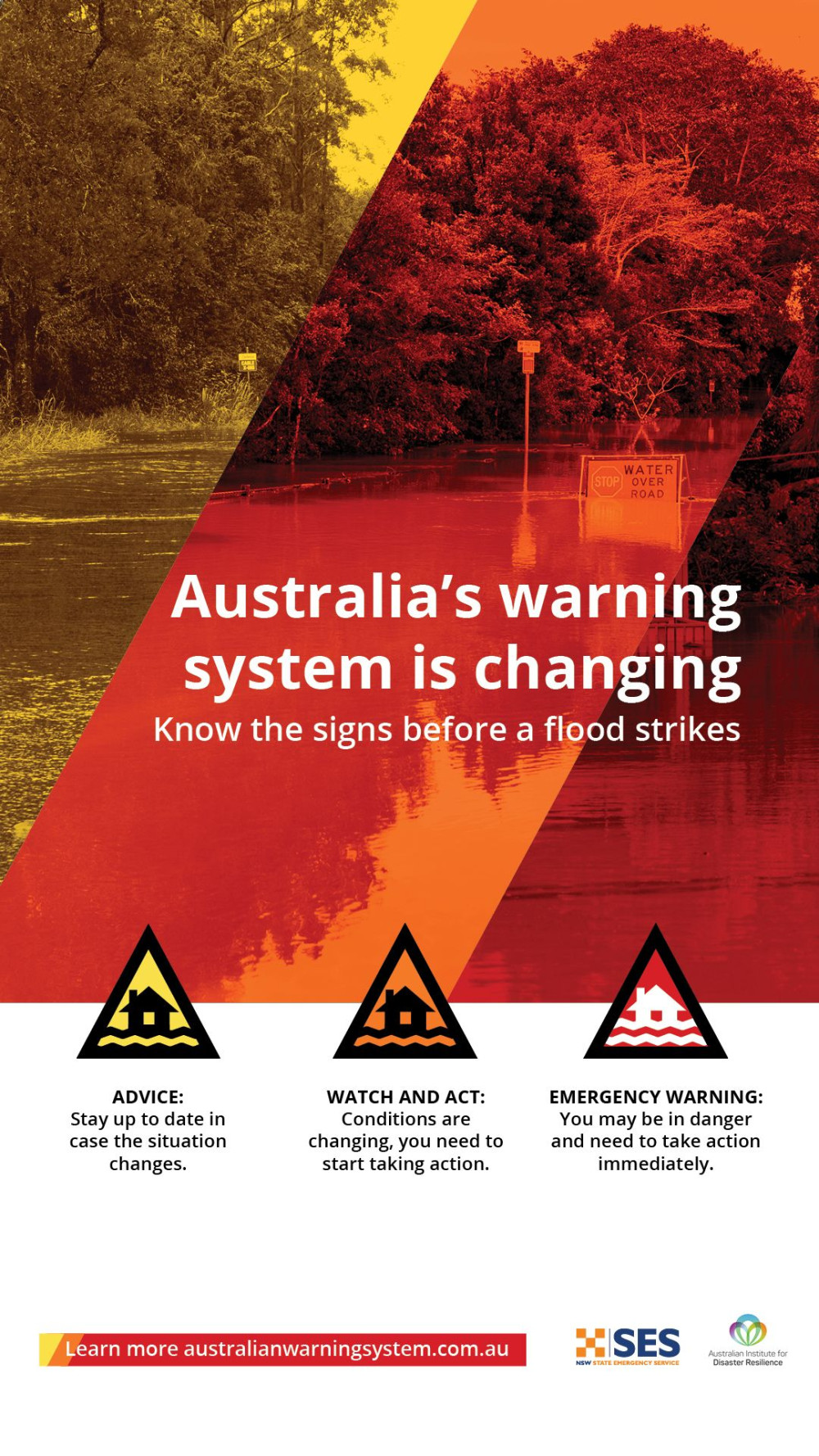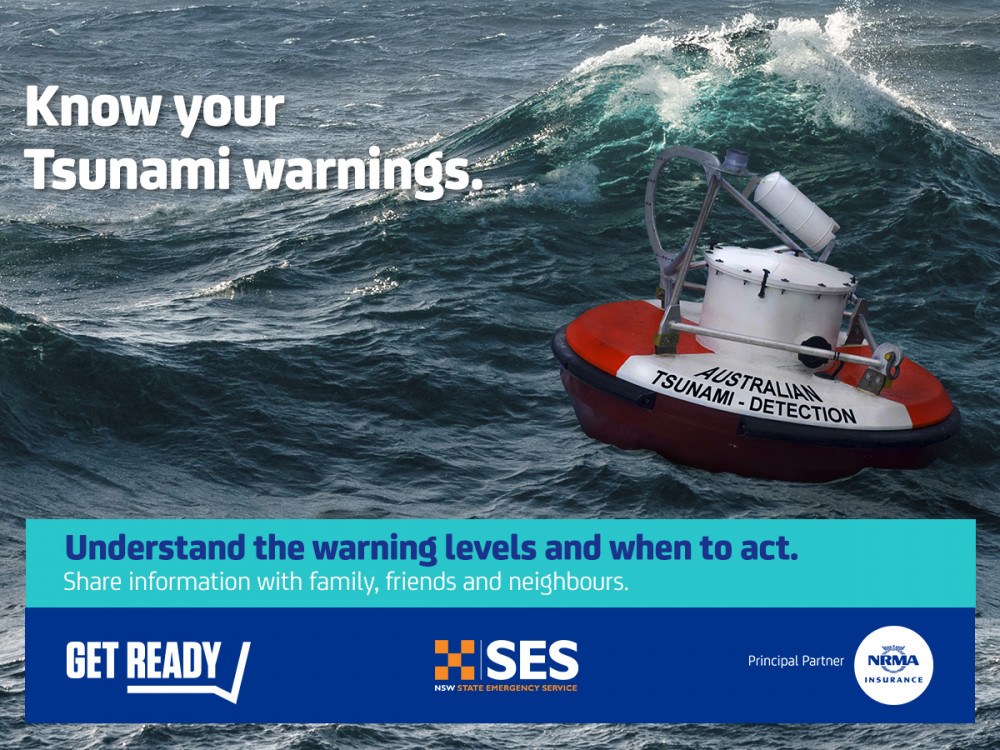Tsunami

ES has rolled out an updated warning system, which will deliver more localised and targeted communication of risks, and clearer warnings about the action people need to take to stay safe.
The new Australian Warning System includes the following three tiers of warnings:
1. Advice;
2. Watch and Act; and
3. Emergency Warning.
Warnings during storms and flood events will continue to be distributed through text message alerts, the SES website, SES social media channels, ABC radio stations and media outlets.
Learn more about each level at Our Warnings | NSW State Emergency Service.

Tsunami can be generated by a number of causes including, volcanic eruptions, undersea landslides and meteor impacts. However for NSW, undersea earthquakes are the more likely source of tsunami.
Most tsunami occur in the Pacific and Indian Oceans. The boundary of the Pacific Ocean (commonly known as the Ring of Fire) experiences frequent earthquakes and the Indian Ocean has two major subduction zones that can also generate tsunami.
Earthquakes from subduction zones are the most common source of destructive tsunami. These earthquakes are generated when two tectonic plates meet and one goes under the other, displacing the sea water above. This can lead to the generation of tsunami waves.
NSW has a moderate likelihood of tsunami compared with other parts of the world. Even with relatively small tsunami, there can be strong waves, rips and currents and unusual sea levels that can be dangerous. Drowning risk significantly increase during tsunami with either marine and land inundation threat. This is due to potentially dangerous rips, waves, water born debris and strong ocean currents.
Tsunami waves can run up well beyond the high tide mark, in extreme cases up to a kilometre inland or up to 10 metres above sea level. Tsunami can also extend into harbours, rivers and estuaries. You should always prioritise life over property damage by leaving the area as soon as a Tsunami Warning is issued, and ensuring you are outside the area at-risk well before the first wave arrives.
Tsunami Warnings
Official Tsunami Watches, Tsunami Warnings, No Threat Bulletins,Tsunami Warning Summaries and and Tsunami Cancellations are issued by the Joint Australian Tsunami Warning Centre.
Tsunami Warnings will indicate a threat level that indicates whether tsunami are likely to:
- affect the marine and immediate foreshore,
- cause land inundation of low lying coastal areas, or
- pose no threat to an area.